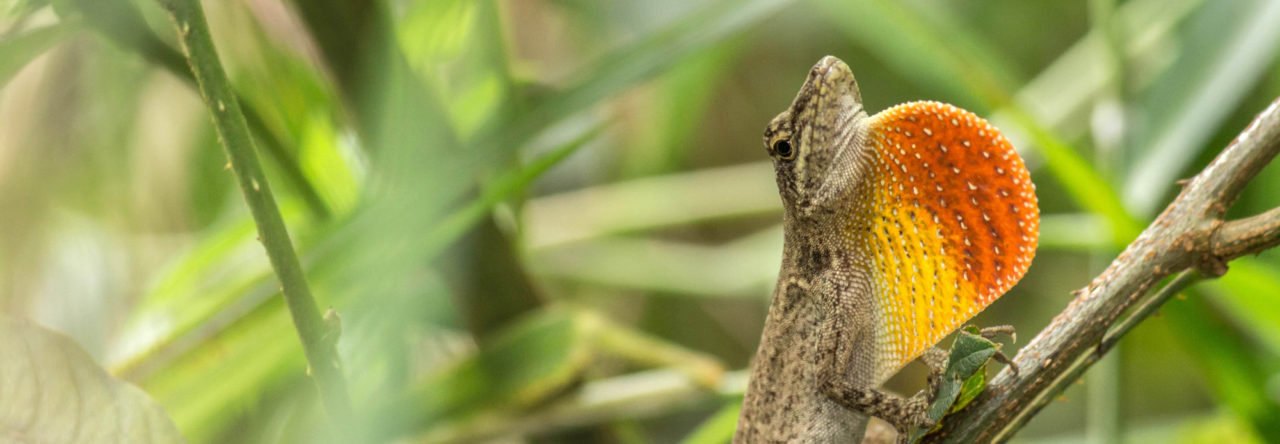Species divergence is driven by a wide variety of forces, but two of the strongest predictors of speciation are the amount of time a lineage has persisted in a landscape, and the ability of lineages to move through a landscape. Lineages are more likely to diverge when they have occupied a landscape for a long time, and/or if their ability to move is restricted, thus limiting gene flow.
In his talk titled “Geographical factors promoting diversification of the northern Andes and Brazilian Cerrado regions: the case of frogs and Anole lizard species,” Carlos Guarnizo described his efforts to test whether these patterns hold true in both different landscapes and different taxa. He surveyed two herpetofaunal communities in two diversity hotspots in South America: frogs in the northern Andes mountain range and Anolis lizards in the Brazilian Cerrado. The montane Andean landscape is structurally complex and covers a range of altitudes, while the Cerrado region is a more uniform savannah-like environment, with intermediate structural complexity. Guarnizo used species distributions and genetic data to look at patterns of diversification across these landscapes to explore which landscape characteristics lead to higher levels of divergence and speciation.
He found that in both areas, topography was a strong predictor of divergence; specifically, more structurally complex landscapes led to higher levels of genetic divergence between sister lineages. These genetic breaks are also often deeper than previously realized, likely representing cryptic species. Despite these strong genetic splits, the niches occupied by sister taxa are generally well-conserved, lending support to the conclusion that landscape structure – rather than adaptive divergence – is responsible for the genetic divergence observed. Interestingly, in Andean frogs, Guarnizo found that the strongest genetic breaks did not occur across mountain peaks as previously thought. Instead, valleys appear to be the strongest geographic barrier to dispersal.
These cases show that landscape topography is a strong factor determining genetic divergence across different landscapes and taxa (including anoles), and may lead to high levels of cryptic speciation.







 What’s going on? Detailed examination revealed two interesting findings. First, this appears to be the result not of a single hybridization event, but minimally of 15 such events, all of them apparently quite recent. The krugi mtDNA has completely displaced the pulchellus mtDNA in these populations, and population genetic analyses rule out genetic drift as the cause. Puzzlingly, genomic analyses find absolutely no krugi nuclear DNA in these populations. The mtDNA is getting in, but not the nuclear genes. Natural selection must be at work, but how? Tereza suggested some sort of genetic mechanism that excludes the nuclear DNA of the introgressing species, somehow kicking it out, likening it to a phenomenon reported in frogs and some insects, but not in any amniotes.
What’s going on? Detailed examination revealed two interesting findings. First, this appears to be the result not of a single hybridization event, but minimally of 15 such events, all of them apparently quite recent. The krugi mtDNA has completely displaced the pulchellus mtDNA in these populations, and population genetic analyses rule out genetic drift as the cause. Puzzlingly, genomic analyses find absolutely no krugi nuclear DNA in these populations. The mtDNA is getting in, but not the nuclear genes. Natural selection must be at work, but how? Tereza suggested some sort of genetic mechanism that excludes the nuclear DNA of the introgressing species, somehow kicking it out, likening it to a phenomenon reported in frogs and some insects, but not in any amniotes.






